
Knee pain is one of the most common symptoms for which patients turn to orthopedists and other specialists. Many people completely ignore the appearance of uncomfortable feelings, considering them age-related and almost natural. But there are many prerequisites for pain in the knee joint, because it has a complex structure, influenced by a variety of external and internal damaging factors. Some diseases are serious and require urgent treatment.
Who is most likely to have a knee injury?
The knees are formed by several bones connected by muscles, ligaments, tendons. There are also 5 synovial bags - cavities surrounded by membranes designed to protect the wrist. Between the bone joints are the interarticular cartilage - the menisci, which help the knee move freely. Violation of the work of even a part of the knee joint leads to the appearance of unpleasant symptoms.
Pain in the knee joint is especially common in people with flat feet. This is a pathology of the foot, which impairs the absorption capacity of limb blows. With age, increased loads on the joints cause their destruction and the development of inflammation - a pain syndrome appears. Similar consequences have different types of deformities of the foot, lower leg.
There are a number of factors under the influence of which knee pain occurs most often:
- overweight;
- Passive lifestyle;
- High sports loads;
- Diabetes;
- Vascular diseases;
- old age;
- Knee surgeries and injuries;
- Work with added load on foot.
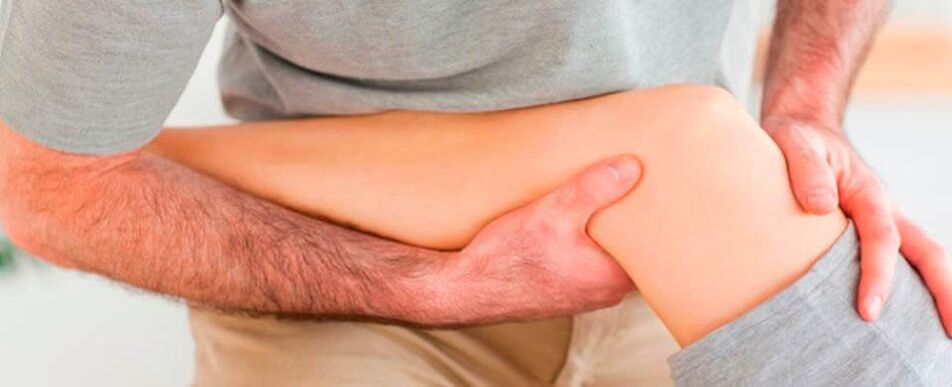
The causes and treatment of knee pain vary greatly, as does the severity of the sensations. If the knee hurts a lot, the cause may be an injury or an advanced stage of osteoarthritis, a severe inflammatory process. Sometimes the symptoms become permanent, even at rest, accompanied by swelling, redness of the skin and cracking. All of these signs should alert a person and force him to visit a doctor.
Pain due to bruising in the knee
Among the traumatic causes of joint dysfunction, bruising is the most common. Why does the knee hurt if the symptoms were preceded only by a slight bruising? Even a slight injury is accompanied by hemorrhage in the soft periarticular tissues, their swelling. As a result, the nerve roots suffer, pain appears.
In the most serious cases, the pain in the knee increases with the bending and stretching of the leg, the person stops moving due to sharp sensations in the joints. On palpation, swelling of the foot can be observed, it is hot to the touch. How to treat such an injury? You should contact a traumatologist, do a radiograph, follow all the recommendations and ensure peace of mind for the leg.
Often, traumatic hemarthrosis becomes the cause of pain in the knee joint after a banal bruising. This is a blood clot in the ankle cavity, causing edema, swelling of the synovial membranes. As a result, the node is filled with blood, in which inflammation begins. Without proper treatment, an injury can result in the development of chronic osteoarthritis, even at a young age.
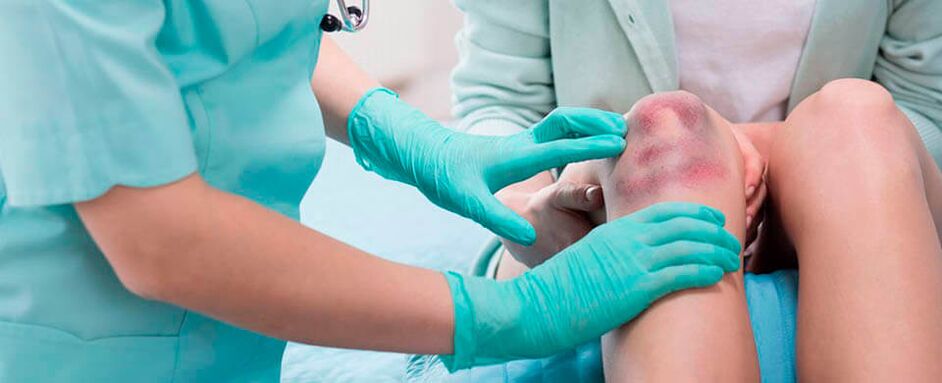
Other types of knee injuries
If the foot in the knee hurts and trauma has contributed to these sensations, the causes may lie in various injuries of the ankle components. Here are the main ones:
- Meniscopathy. It is a flattening or tearing of the meniscus. Injury is particularly common in professional athletes, people involved in extreme sports, and home injuries. A person feels that the knee is very sick, the nature of the sensations is piercing, dagger, the joint loses mobility for a while.
- Ligament damage. A ligament tear (sprain) occurs when the leg is twisted, after a jump, the limb extends into an unnatural position. There is a sharp pain, the foot swells, the position of the ankle changes, it is released.
- Rupture of the cruciate ligament. Since these ligaments are located inside the joint, an injury often leads to a blood clot in the knee cavity. Only a puncture will help pump blood and make an accurate diagnosis.
Painful pain in the knee joint sometimes accompanies chronic patella dislocations. Without treating an acute injury in a number of patients, the dislocation becomes chronic and gives regular relapses. In children, this pathology causes an X-shaped curvature of the foot and leads to a serious violation of its function. Sometimes the pathology affects the knees on both feet.

Inflammatory diseases of the knees
Often the standard treatment for knee pain is ineffective. In this case, not the joint itself, but the surrounding soft tissue may be affected. So, tendonitis, or inflammation of the tendon, can be caused by increased stress on the limbs, leg injuries in the past, allergies, drug reactions, and so on. The knee joint hurts with such a disease, as a rule, during the day or in the evening, at night the pain decreases. In the acute phase, the mobility of the joint is very limited, the syndrome is persistent, not suitable for therapy with oils, creams. Sharp sensations are also observed on palpation of the lateral part of the knee.
If the knees ache regularly, the symptoms worsen after hypothermia, the cause may be synovitis - inflammation of the synovial membranes. An inflammatory exudate appears inside the joint, which causes a burning sensation and pain. The causes of pathology are different:
- autoimmune diseases;
- Metabolic diseases;
- Injuries in the past;
- Osteoarthritis.
Another "popular" disease in which the knees ache is bursitis. Occurs when the bursa (joint sac) becomes inflamed. In addition to pain syndrome, there is redness, swelling, increased tenderness of the patella area. If you do not explain in time how to treat bursitis, it almost always becomes chronic.
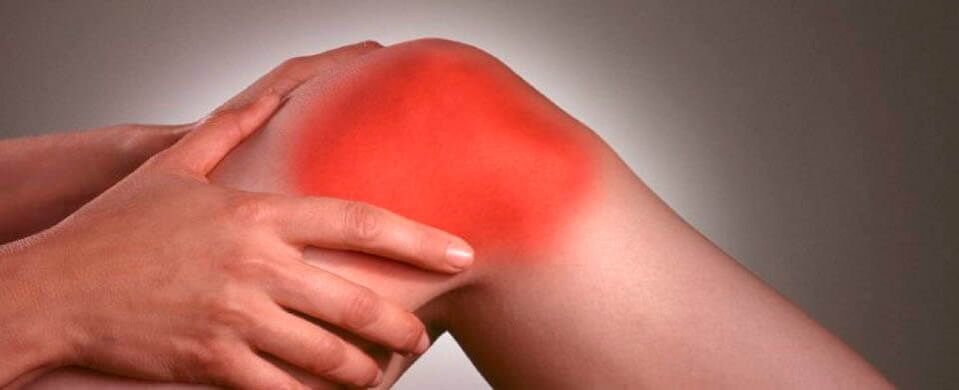
Knee area neoplasms
Malignant tumors of this localization are rare, pain syndrome is typical for them only in the very late stage. Most often, painful pain in the knee joint is inherent in benign formations:
- Baker's cyst. This tumor appears below the knee, on its posterior surface. In appearance, the skin above the cyst is normal, not inflamed; in the bent form, the swelling may not be at all. In a standing position, a clearly defined, soft, elastic formation appears at the site of cyst localization. Appears after a unilateral knee injury, suffered cartilage damage. Very often, the cyst accompanies chronic synovitis, osteoarthritis, rheumatoid arthritis. Large cysts cause not only knee pain but also a serious limitation of limb mobility. Due to congestion of blood vessels and nerves, other symptoms are skin cold, paleness, goose bumps and numbness.
- Meniscus cyst. It appears in the external or internal meniscus, when a fluid cavity is located inside the cartilage. The knees in this case ache after high loads or until the end of the day. Large cysts may be visible on the side of the wrist, while smaller ones are only visible on ultrasound or x-ray.
A rare pathology is Hoff's disease - the transformation of adipose tissue of the joint, which becomes fibrous and causes joint dysfunction. Against the background of this pathology, osteoarthritis often develops, which provokes pain in the knee joint. Causes - hormonal disruptions, menopause in women.
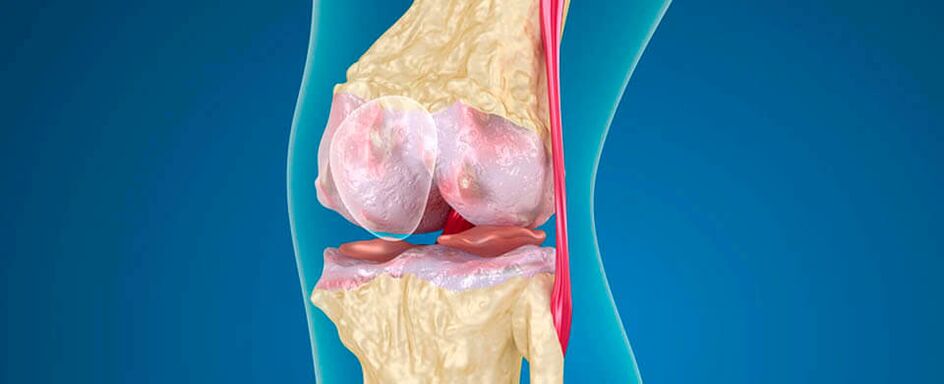
Infectious pathologies of the joints
Against the background of infection, the knee joint hurts sharply, sharply, providing rest does not cause relief. Even urogenital and intestinal infections can cause complications in the musculoskeletal system, resulting in reactive arthritis. Bacteria (salmonella, chlamydia, gonococci and others) penetrate into the bone articulation cavity with blood flow, settle in the tissues and cause inflammation. The tendons are usually also inflamed, so the knee is swollen and hot to the touch.
Tuberculosis is a serious disease. Mycobacterium tuberculosis multiplies in bone tissue, causing bone fusion, cartilage necrosis and soft tissue. Without urgent treatment, the knee joints hurt and collapse, and the process covers more and more large areas. As a result, fistulas appear - pus cavities, which can spill out and cause damage throughout the body.
An acute, urgent disease is bone osteomyelitis. What to do if your knees ache and the process is accompanied by weakness, muscle aches, temperature up to 40 degrees? If the knee pain is dull, erupts and the tissues themselves are swollen, red, blue, you should urgently call an ambulance and go for an emergency operation. Otherwise, you may lose a leg or die.
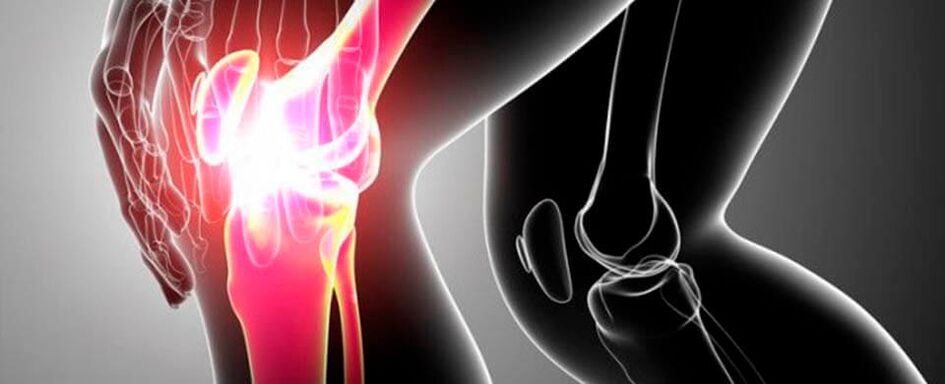
Knee pain - causes of a degenerative nature
After the age of 50, a large number of people have knee pain. Prerequisites are aging of the body, consumption of the key apparatus and the development of the most common pathology - osteoarthritis (gonarthrosis). It leads to thinning, destruction of cartilage with a change in the shape of the bone heads. Most often, at an early stage of pathology, the knee hurts on one side, after a few years the lesion becomes bilateral. In the morning, the stiffness of the foot bothers, but quickly passes. Increased sensation is possible after physical work, intense sports, long walks.
In the advanced stages, articular tissue collapses, osteophytes grow on the sides of the joint space. These are rivets made of bone tissue, which in severe cases rupture and cause unbearable pain. There are a number of degenerative pathologies, the symptoms of which will be similar to gonarthrosis:
- Osteochondropathy. Affects the articular surface of the bone, is associated with trauma, sports. Adolescents can develop for no apparent reason.
- Arthritis. Occurs rheumatoid, psoriatic, gout, provokes chronic inflammation and destruction of the joint.
- Chondromatosis. The etiology is unclear. The disease causes the appearance of joints in the synovial membranes, which restrict the movement of the knee and cause pain.
Menopausal women often have knee pain due to osteoporosis - thinning of the bones, increasing their fragility. The disease is accompanied by leg cramps, pain in the spine, periodic fractures.

Other prerequisites for knee pain
When the knees are injured, the etiology of the sensations may also lie in the loss of the peripheral nervous system. So, sciatic nerve neuropathy against the background of lumbar vertebral damage leads to a variety of symptoms. The man's knees are broken, the thigh area is sore, the joints of the limbs are weakened, the sensitivity of the skin is disturbed. Leg reflexes also vary.
Sometimes the entire knee joint hurts due to vascular disorders. Only in adolescence do not have to worry too much - because of the rapid growth of the body, the vessels do not have time to supply the bones with blood. With age, the condition of the wrist normalizes - usually by the age of 18-20, the pain stops completely.
In old age, in the presence of atherosclerosis, the knees are also often injured, what to do in this case? Without the normalization of fat metabolism, plaque will continue to form inside the arteries. The vessels become blocked, stopping feeding the node to the maximum. Develops osteoarthritis, the pain becomes chronic. Unpleasant sensations in the knee area can also be caused by varicose veins, thrombophlebitis and vascular thrombosis.
How to make a diagnosis?
People's knees ache quite often - how to treat the condition that has arisen can only be determined after examination. Both sharp and attractive pains in the knee are characteristic of a mass of pathologies, some of which are very dangerous. For diagnosis, you should contact a surgeon, orthopedist, neurologist, rheumatologist, traumatologist. He will conduct a study, will discover the exact symptoms of the disease, will determine the accompanying signs. Also, the doctor at the initial appointment will perform a series of tests and physical examinations to clarify the nature of the problem.
What to do when your knees hurt, what instrumental methods will help identify the causes? Usually assigned:
- ultrasound;
- MRI;
- CT;
- Radiography.
The choice of the correct technique should be left to the physician. So the ultrasound well reflects the changes in the foot with osteoarthritis, meniscus damage. The radiograph perfectly shows the deformities of the bones, the presence of osteophytes. MRI and CT provide complete information, they are essential for complex diseases. In addition, the doctor will prescribe blood tests to rule out inflammation and rheumatism, if necessary, a wrist biopsy will be done. With osteoporosis, densitometry is necessary - it will show the density of bone tissue in a patient.
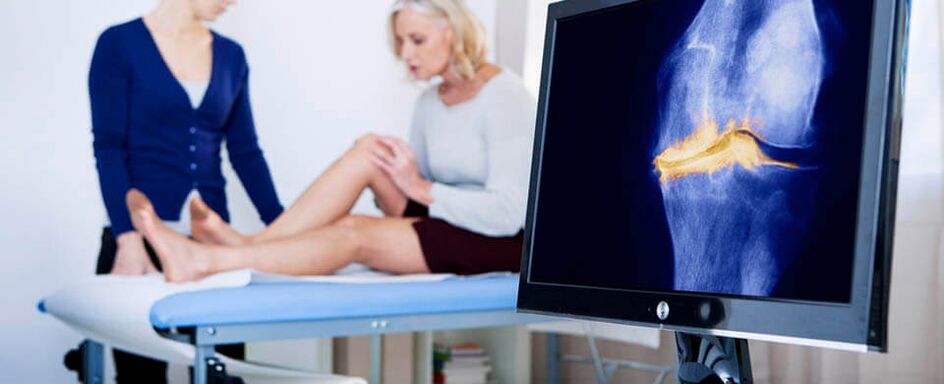
Treatment of knee pain
If the pathology is traumatic in nature, traumatologists are involved in the treatment, sometimes it is performed in a hospital. Light bruises go away on their own within a few days, for rapid resorption of the hematoma it is advisable to apply absorbable ointments on the knee. For pain, it is necessary to rub ointments with non-steroidal anti-inflammatory ingredients.
How to treat when the knee hurts with its inflammatory lesion? In the acute phase of bursitis, synovitis, arthritis, the affected foot needs rest, ice compresses can be applied for 15 minutes during the first 3 days. Severe pain is relieved with injections of non-steroidal anti-inflammatory drugs, injections of anesthetics directly into the joints. To prevent chronic inflammation in the joints after pain relief, physiotherapy and exercise therapy are prescribed.
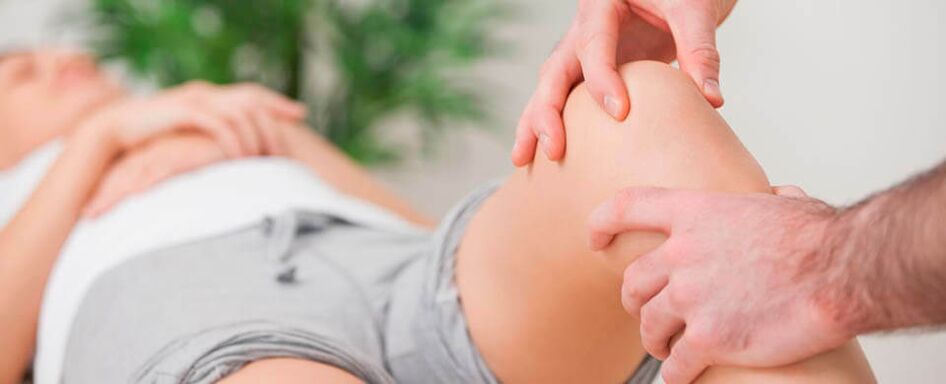
When a person has knee pain due to gonarthrosis, what should be done in this case? The main drugs for treatment are chondroprotectors and injections of hyaluronic acid. These drugs are created to restore the nutrition of the articular cartilage, as a result, it stops the breakdown. Also for knee rehabilitation should be assigned:
- vascular barna;
- Physiotherapy;
- Gymnastics;
- Massage;
- Vitamin complexes.
Infectious joint diseases are an indication for the introduction of antibiotics into the joint cavities or oral administration of drugs. In some cases, it is necessary to perform an operation, removing the tissues affected by the pus. Surgical intervention is also used to treat advanced forms of osteoarthritis with osteophyte growth. Sometimes just replacing a joint with a prosthesis allows a person to maintain the ability to walk normally.



































